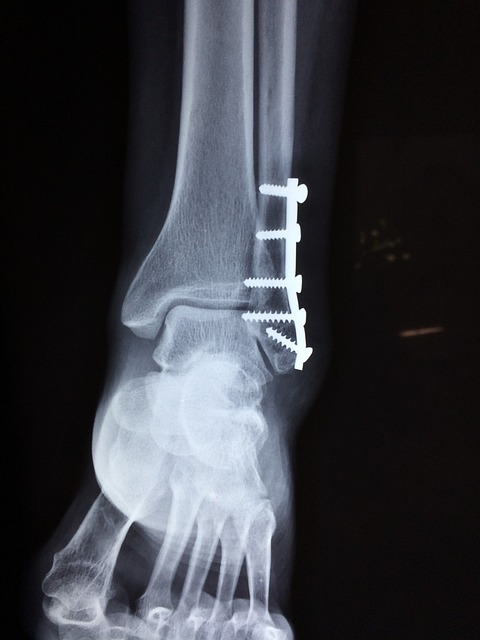Podiatrist Services: Comprehensive Foot and Ankle Care for Every Step!
Podiatry is a specialized branch of medicine focusing on the foot and lower limb, playing a pivotal role in overall health by addressing conditions from infections to chronic diseases like diabetes. As vital contributors to healthcare, podiatrists help seniors maintain mobility, provide diabetic care, detect systemic issues early, and improve quality of life through tailored interventions and preventive measures.

The Essential Role of Podiatry in Healthcare
Podiatry occupies a unique and vital position within the healthcare ecosystem. As medical specialists, podiatrists complete extensive education including four years of podiatric medical school followed by three-year residency programs. Their expertise encompasses not only the foot and ankle but extends to understanding how lower extremity issues can impact overall health and mobility.
Podiatrists are qualified to perform surgeries, prescribe medications, order diagnostic tests, and develop comprehensive treatment plans. Their scope of practice includes addressing biomechanical issues, managing sports injuries, treating skin and nail conditions, and providing specialized care for patients with systemic conditions that affect foot health.
Many people don’t realize that podiatrists often serve as early detectors of serious systemic conditions. Changes in foot health can signal the development or progression of diabetes, arthritis, cardiovascular issues, and neurological disorders, allowing for earlier intervention and improved outcomes.
Podiatry in Senior Foot Care
As we age, our feet undergo significant changes that can affect mobility, balance, and quality of life. Senior foot care represents one of the most important specialties within podiatry, addressing age-specific conditions while helping older adults maintain independence and prevent falls.
Common foot problems in seniors include arthritis, decreased fat pad cushioning, thickened nails, circulatory issues, and diabetic complications. Regular podiatric assessment becomes increasingly important with age, as seniors may have difficulty performing self-examinations or basic foot care due to limited mobility or vision changes.
Podiatrists provide specialized interventions for seniors including custom orthotic devices to improve balance and gait, appropriate footwear recommendations, and management of chronic conditions like peripheral arterial disease that disproportionately affect older populations. They also coordinate care with other specialists, creating comprehensive treatment plans that consider the unique needs of geriatric patients.
The Importance of Preventive Foot Care
Preventive podiatry follows the adage that an ounce of prevention is worth a pound of cure. Rather than waiting for painful symptoms to develop, regular podiatric check-ups can identify potential issues before they progress to more serious conditions requiring extensive treatment.
Preventive foot care encompasses proper hygiene practices, appropriate footwear selection, biomechanical assessments, and early intervention for minor issues before they become major problems. For athletes and active individuals, preventive podiatry includes gait analysis, custom orthotics, and specific exercises to address mechanical imbalances that could lead to injuries.
For people with chronic conditions like diabetes, preventive foot care becomes even more critical. Regular podiatric screenings can detect early signs of neuropathy or vascular issues, potentially preventing severe complications including ulceration and amputation. Podiatrists provide detailed education on daily self-examination techniques and warning signs that require immediate attention.
Why You Should Learn More About Podiatrist Services Today
The field of podiatry continues to evolve with technological advancements and innovative treatment approaches. Modern podiatric care incorporates cutting-edge diagnostics like 3D scanning for custom orthotics, minimally invasive surgical techniques, regenerative medicine options including platelet-rich plasma therapy, and advanced wound care protocols.
Many people remain unaware of the extensive services podiatrists provide beyond treating obvious problems like ingrown toenails or bunions. Contemporary podiatric practices address sports medicine concerns, pediatric developmental issues, workplace ergonomics, and specialized care for occupations that place unusual stress on feet and ankles.
Understanding available podiatric services allows individuals to make informed decisions about their foot health before problems arise. This proactive approach includes knowing when self-care is appropriate versus when professional intervention is necessary, recognizing early warning signs of serious conditions, and incorporating foot health into overall wellness routines.
Diabetic Foot Care and Prevention
Diabetes presents unique challenges for foot health due to its effects on circulation and nerve function. Diabetic foot care represents one of the most significant subspecialties within podiatry, focusing on preventing complications that can lead to serious medical consequences.
The primary concerns in diabetic foot care include neuropathy (nerve damage that reduces sensation), poor circulation that impairs healing, increased infection risk, and structural changes that create pressure points. These factors combine to make even minor injuries potentially serious, as small wounds may go unnoticed and untreated until significant complications develop.
Podiatrists develop comprehensive diabetic foot care plans including regular check-ups, protective footwear prescriptions, custom orthotics to redistribute pressure, wound care protocols, and detailed patient education. The collaborative approach between podiatrists, endocrinologists, and other specialists has been shown to significantly reduce amputation rates and improve quality of life for diabetic patients.
Common Podiatric Services and Treatments
Podiatrists offer diverse treatments ranging from conservative approaches to surgical interventions based on individual patient needs.
| Service Category | Common Treatments | Typical Applications |
|---|---|---|
| Preventive Care | Biomechanical assessments, Custom orthotics, Footwear recommendations | Athletes, Seniors, Children with developmental concerns |
| Conservative Treatments | Physical therapy, Laser therapy, Bracing and strapping | Sports injuries, Plantar fasciitis, Achilles tendonitis |
| Surgical Procedures | Bunion correction, Hammertoe repair, Neuroma excision | Structural deformities, Persistent pain, Failed conservative treatment |
| Wound Care | Debridement, Advanced dressings, Offloading techniques | Diabetic ulcers, Traumatic injuries, Post-surgical recovery |
| Nail Treatments | Ingrown toenail procedures, Fungal treatments, Reconstruction | Infection, Trauma, Congenital conditions |
This article is for informational purposes only and should not be considered medical advice. Please consult a qualified healthcare professional for personalized guidance and treatment.
Our feet contain nearly a quarter of all the bones in the human body, along with complex networks of muscles, tendons, ligaments, and nerves. This intricate architecture requires specialized care throughout life. By understanding and utilizing comprehensive podiatric services, individuals can maintain mobility, prevent complications from systemic conditions, address structural abnormalities, and enjoy improved quality of life through proper foot health.




